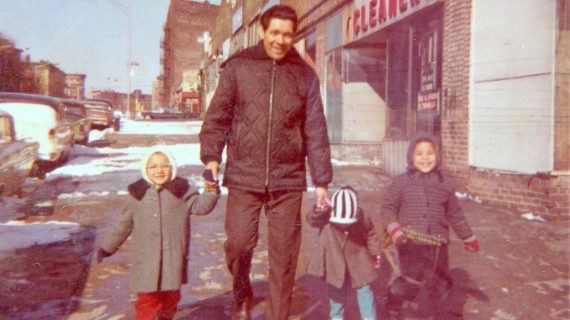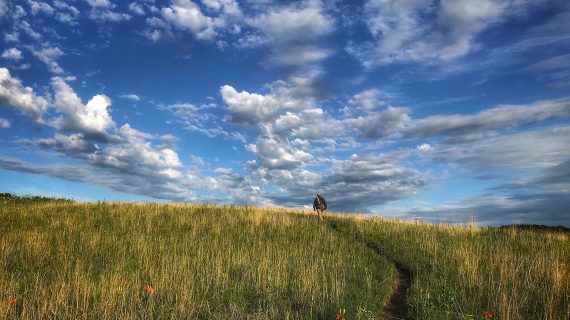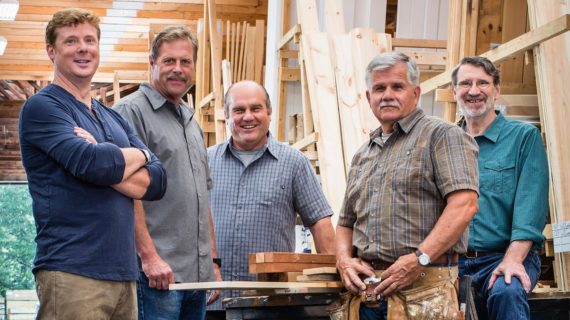Shawn Johnson:
The Natural Resources Board this week passed new emergency rules to combat the spread of chronic wasting disease in Wisconsin. Those rules include requiring enhanced fencing around deer farms, banning the movement of live deer from deer farms and hunting ranches and CWD-affected counties and prohibits hunters from moving whole deer carcass from those counties. The emergency CWD rules will be in effect for the hunting season this fall. Joining us this week is George Meyer of the Wisconsin Wildlife Federation and former DNR secretary. George, thanks you for joining us.
George Meyer:
Thank you for having me Shawn.
Shawn Johnson:
You support these rules? Do they go far enough in stopping the spread of CWD?
George Meyer:
We do supports the rules. Wisconsin Wildlife Federation supports the rules. There could be additional rules, maybe in the future but these are a major step forward to slow the spread of chronic wasting disease.
Shawn Johnson:
So deer farms required to have an eight-foot fence. These new rules would require a second fence, an electric fence or a solid perimeter fence. Can you explain why that requirement is being added and have deer farms been an issue with the spread of CWD?
George Meyer:
They have. Let’s start with the spreading. In the last three years, there’s been ten new outbreaks of chronic wasting disease in different deer farms than there had been previously. And it’s not just in southern Wisconsin, where the wild deer has CWD, it’s been up in Oneida County and northern counties, many of these new areas. So the — having an additional fence is also necessary because if it gets into one of these new areas — single fencing hasn’t worked. In the last three years, there’s been 53 times where deer have broken out of deer farms when they just had a single fence. So this second fence is to prevent — another barrier of — from deer breaking out or contact through the fence between wild deer and deer farm deer. Many of them will probably go to the electric fence alternative because it’ll be the less expensive. In terms of the movement of carcasses by hunters, that’s pretty important also. And what the rule basically says is if you’re hunting in an area that has chronic waste disease in the wild herd, you can’t move the carcass except to an immediately adjacent county that has chronic waste disease and definitely not in any county that doesn’t unless it’s going to a meat processor, take it to some place to have your meat processed, that’s fine. And there’s a couple of other exemptions, but the idea is not to spread the disease that way also.
Shawn Johnson:
So why is this significant for hunters and then why is this significant for somebody who’s not a hunter?
George Meyer:
Well, the deer herd in this state is critically important for sports men and women. It’s the prime animal that’s hunted in the state. It’s an important part of our hunting legacy in the state. It provides a lot of food on the table for sports men and women in the state. And it’s really an economic benefit. Estimated that hunting and wildlife watching associated with deer herd brings — is about a billion dollar industry in this state. So really it’s important in terms of spreading it and ultimately it affecting the whole deer herd.
Shawn Johnson:
Some have called for a statewide baiting and feeding ban? Where does Wisconsin Wildlife Federation stand on that?
George Meyer:
We have supported that for many years. Last 10, 15 years, I think we took a vote on that and made our public statement about 12 years ago. Some hunting groups and some hunters don’t like it but the majority of hunters do. They understand when you bring these animals together over feed, you get saliva and other ways of passing the prions that cause chronic wasting disease.
Shawn Johnson:
Another hot button issue at the DNR this week, the agency reversed course on another policy. It had removed law enforcement credentials from park rangers and was instead having wardens provide more coverage in state parks. For those who don’t know, what’s the difference between a DNR warden and a park ranger with law enforcement credentials? What did DNR do? And then what did they undo?
George Meyer:
Basically, what the DNR did, about a year ago, was basically make the conservation wardens in charge of not just the environmental regulations they enforce in hunting and fishing regulations, they also put them in charge of enforcing the regulations you have at a state park from registration and camp fires and any violations of law and also for forest rangers who have responsibility for arson and things like that. They did it to streamline training and things like that, which had on its face sounded fairly good. Except there ended up not being enough staff, wardens in local areas to take over at local parks. Example, Door County has five parks. There were only two or three wardens in Door County. There was a marine unit on the lake. So what they were having to do is bring wardens great distances from other parts of the state which entailed cost of travel, lodging and the time spent on the road hours eating up their hours. But also it left the game — like boating enforcement, fishing enforcement in the summer plummeted because the wardens weren’t at their local stations.
Shawn Johnson:
We’re going to have to leave it there. George Meyer with the Wisconsin Wildlife Federation, thank you for joining us.
George Meyer:
Appreciate it Shawn.
Search Episodes
Related Stories from PBS Wisconsin's Blog

Donate to sign up. Activate and sign in to Passport. It's that easy to help PBS Wisconsin serve your community through media that educates, inspires, and entertains.
Make your membership gift today
Only for new users: Activate Passport using your code or email address
Already a member?
Look up my account
Need some help? Go to FAQ or visit PBS Passport Help
Need help accessing PBS Wisconsin anywhere?

Online Access | Platform & Device Access | Cable or Satellite Access | Over-The-Air Access
Visit Access Guide
Need help accessing PBS Wisconsin anywhere?

Visit Our
Live TV Access Guide
Online AccessPlatform & Device Access
Cable or Satellite Access
Over-The-Air Access
Visit Access Guide
 Passport
Passport












Follow Us